ORIZURU (COVER'S PICTURE)
A sheet of colored paper can deftly be turned into various forms of animals and birds by this method of paper folding. Most noble among them is this ORIZURU, folded-paper crane.
|
| MT. FUJI
Mt. Fuji, 12,380 ft. in height, is the tallest, and most graceful mountain in Japan. From every angle of the scenic spots at its foot, Mt. Fuji can easily be admired and it has become the object of marvel by visitors.
|
UKIYOE "THREE BEAUTY"
The Ukiyoe color print is well-known as a typical wood block print of Japan. This masterpiece is a representative work of Utamaro Kitagawa and it is believed to have been printed around 1790.
|
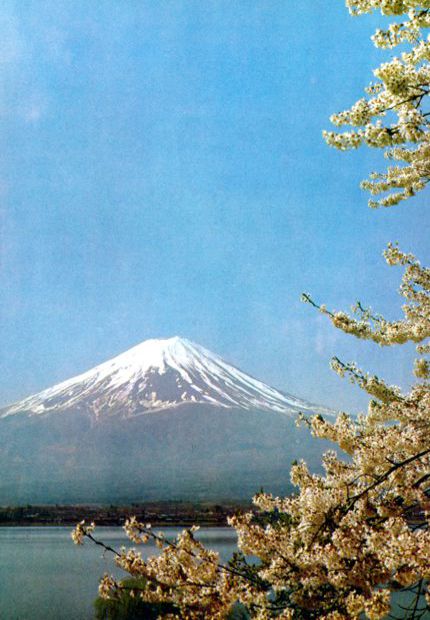 |
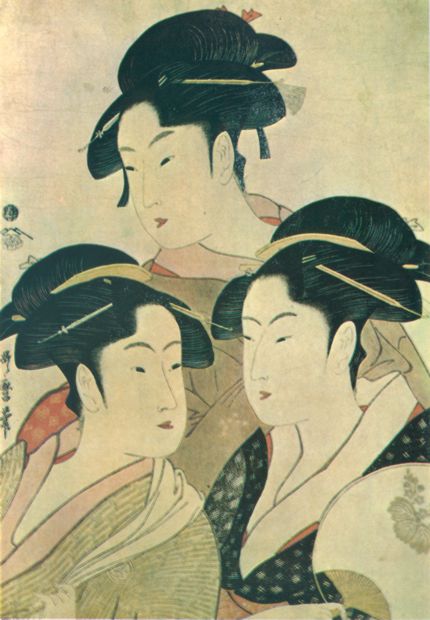 |
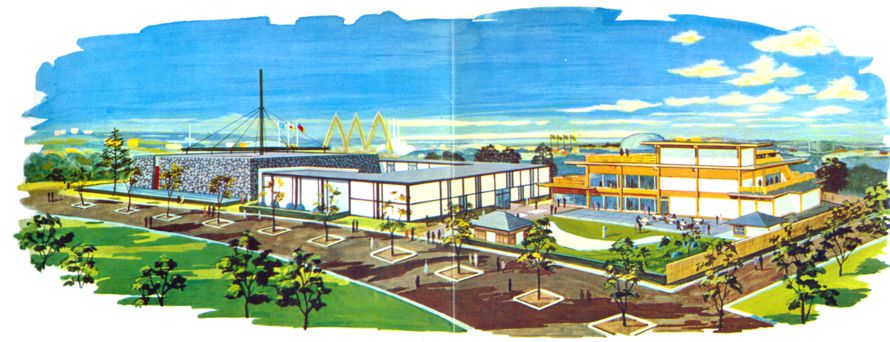 |
- __Under the banner of "Peace Through Understanding", Japan is participating in the New York World's Fair 1964-1965.
- __The significance of establishing the Japan Pavilion lies in our sincere hope to have guests take a look at what modern Japan is really like, thus providing you a better understanding of Japan.
- __The Japan Pavilion consists of three structures. the first one traces the process of Japan's development and introduces its present industry, culture and tourist attractions. The second structure furnishes a display space for a wide variety of products made by Japan's leading manufacturing corporations. The third building is being utilized as a restaurant-theater where you can enjoy first-class Japanese meals such as Sukiyaki, Tempura and other delicacies and wonderful Japanese shows presented on the restaurant stage.
- __This is the year of the 18th Olympiad which will be held in Tokyo this fall, and we shall be happy if this Japan Pavilion can contribute to furthering your understanding of our country.
|
|
|
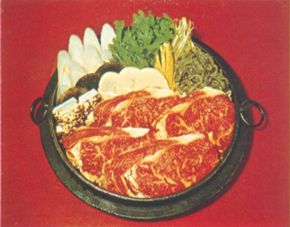 |
JAPANESE DISHES
- __The Japanese archipelago, surrounded by water, has abundant marine products, and its varied topography provides plenty of luscious mountain products.
- __These food, in unlimited variety all the year around, are gratifying not only to the palate but also to the eye, and never fail to tempt a guest's appetite when served in fine Japanese porcelain.
- __Originally, the diet of the Japanese people was made up of rice as a staple food, and of fish and vegetables as subsidiary foods. Since the beginning of this century, meat and bread have been introduced widely into the Japanese diet and have won much popularity among most city dwellers in recent years.
- __In fact, Japanese dishes are popular throughout the world, but most popular among them are, needless to say, "SUKIYAKI" and "TEMPURA", now served for your eating pleasure at the restaurant-theater called "House of Japan" in Japan Pavilion.
- __We would be honored by your visit.
- __"SUKIYAKI" - Beef, bean curd, SHIRATAKI (devil's tongue vermicelli) and vegetables are put into the SUKIYAKI pan one after another. This SUKIYAKI banquet can be enjoyed more if you yourself cook it and eat it from the seething pan with the aid of chopsticks. And it would be delightful to enjoy the pleasant atmosphere of the House of Japan.
- __Enjoy a SUKIYAKI party with your friends. You'll always remember it!
- __"TEMPURA" This timely heavenly food has long excited the taste of foreign visitors to Japan. The finest sea foods and vegetables are covered with a light batter of flour milled and blended in ancient recipes, then delicately browned in vegetable oils of sesame and other grains. You'll come back again, once you've enjoyed a food flavor as rare as that of heavenly TEMPURA.
- __"SAKE" - The soul of rice's grains springs forth to give the world Japan's favorite wine, clear mild SAKE. Its flavor blends well when it's warm with SUSHI, TEMPURA or SUKIYAKI.
- __Try it once and You'll like it forever!
|
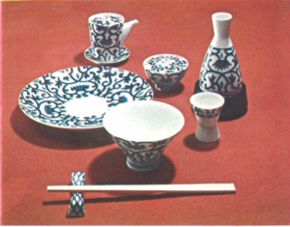 |
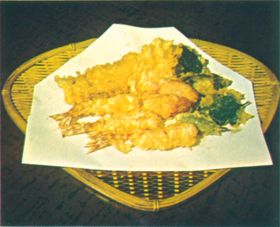 |
|
TRADITIONAL ARTS
- __Varied changes of nature can be seen in four clearly distinct seasons in Japan. The manners and customs of the Japanese people matured by its blessed climate have brought a charming taste to the lives of Japanese people. We would like you to understand some of our traditions which are on display in Japan Pavilion.
- __"CHIVALRY" or "MILITARY ARTS" - JUDO and KENDO are still highly praised n terms of not only their time-honored and skillful techniques taken over from the feudal days by a number of great swordsmen and master fencers, but of their contribution to spiritual elevation on the part of warrior class.
- __Even in this modern ears, therefore, both traditional sports are popular among the people. In particular JUDO, selected as one of the events for the 1964 Tokyo Olympic Games, is now making a great enthusiasm around the world.
- __"CHA-NO-YU" (Tea Ceremony) and "IKEBANA" (Flower Arrangement) - Both CHA-NO-YU and IKEBANA are expressions of Japanese blending of manners with artistic accomplishment through artistic use of nature's beauty and man's imperfections.
- __IKEBANA applies natural beauty in life while CHANOYU pursues spiritual beauty. These two arts of Japanese tradition have been passed down from old and still flourish in our daily life.
- __"TANABATA FESTIVAL" (The Star Festival) - The Tanabata Festival of July 7, one of the Japanese traditional events, originated in the old and romantic tradition of the Star Weaver (Vega) and her beloved Altair who were separated from each other by the Milky Way (called silver stream in Japan). On the evening of July 7 when the two lovers meet on the Milky Way once a year, the people hang strips of colored paper on bamboo branches erected at the eves.
- __"HANABI" (Fireworks) In summer a number of river carnivals are held in the evening at various parts throughout the country, where big rocket fireworks and fixed fireworks set off by pyrotechnists competing for recognition of spectators. Shining so beautifully in the night sky, those fireworks bring about a poetic mood into the hearts of spectators.
- __
|
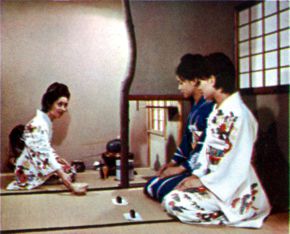
|
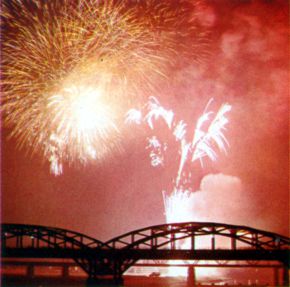 |
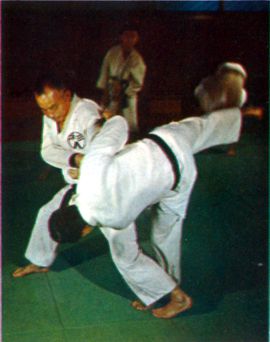 |
|
KAGAMI JISHI
Most famous among the conventional repertories of Kabuki, one of Japan's traditional theatrical arts is the "Kagami Jishi."
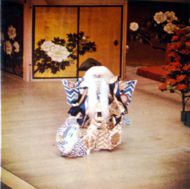 |
|
SUPEREXPRESS "DREAM" TRAIN
Japan is proud of its foremost railway engineering feat. Ths is the world's fastest train, running between Tokyo and Osaka at speeds of up to 155 MPH.
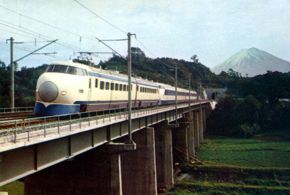 |
|
ORCHESTRAS
Japan's entertainments have jumped up to the world's top level in the field of western classical music as well as traditional oriental music.
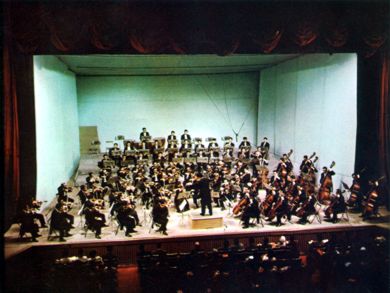 |
|
|
PALACE PLAZA
Seen to the left is the business district of Tokyo, in the foreground government offices and in the distance the Tokyo Tower, highest television tower in the world. The big fountain in the photo was constructed with funds contributed by the Japanese people to commemorate the marriage of the Crown Prince.
|
|
- __Japan, an archipelago lying off the eastern coast of the Asian continent, is a nation with a long history.
- __Today's Japan, however, is full of youth, vitality and spirit that is constantly in quest of every means to improve old things and discover the new.
- __In accordance with the development of modern industries such as iron and steel, shipbuilding, fisheries and rolling stock, communication equipment and synthetic fiber industries, Japan has sprung into the ranks of the leading industrial nations of the world.
- __In the field of education, the number of universities total 591 in addition to such educational institutions as primary schools (6 years), secondary schools (3 years), bringing the educational level of the whole nation up the highest in the world.
- __Turning to Japanese livelihood, most of the households at present are enjoying the convenience of electric refrigerators, washing machines and numerous other electric appliances. Television has become so much in vogue that the age of "A Set A Family" has arrived in Japan.
- __On the other hand, white-collor workers commute to their air-conditioned offices in modern trains that run exactly on time and in the evening return to their cozy homes or well-equipped apartments. And at big automated plants, factory workers are enjoying a pleasant and healthy life at their jobs. This pattern of life is normal in urban areas of Japan.
- __In agrarian districts mechanized farming has become popular nowadays with various kinds of tractors and chemical fertilizers in wide use.
- __The achievements of the extensively-developed Japanese economy have constituted a motive power not only for its own well-being but also toward the promotion of "World Peace" in collaboration with other countries of the world.
|
|
SHIPYARD
Proud of its biggest tonnage of ships launched in the world, I H I (Ishikawajima-Harima Heavy Industries) also leads the line of heavy industry with tremendous achievements. Photo shows the launching ceremony of the 66,810 - DWT ore & oil carrier (Delaware Getty) built for the Tidemar Corp.
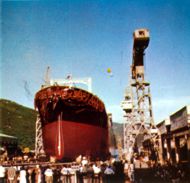 |
|
|
LIBRARIES
Repletion of the educational system has accelerated the utility percentage of public libraries. And today it is not an unusual sight to see a number of young students indulging themselves in reading at a library.
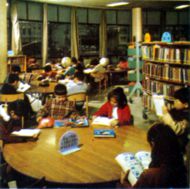 |
|
FROM THE AIR
Towering buildings on both sides of the highway meandering along in the Tokyo-Yurakucho district symbolize the vigor of Japan's growing economy.
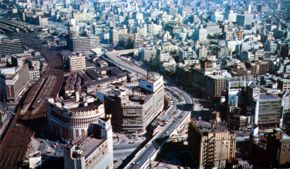 |
|
|
NATIONAL ATHLETIC STADIUM
The main stadium for the 1964 Tokyo Olympic Games, through which we hope world peace and goodwill will be deepened.
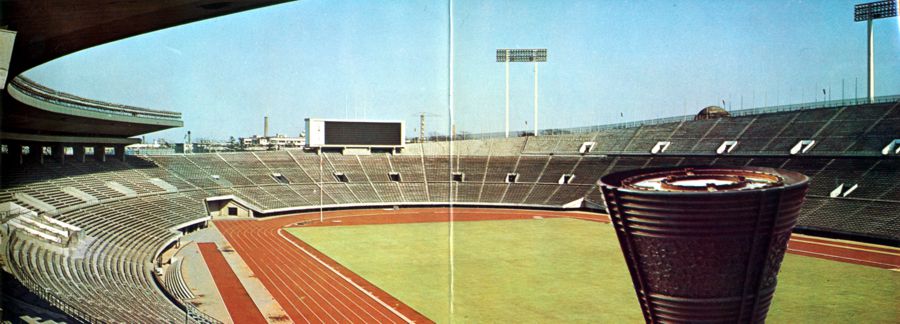 |
EXPRESSWAYS
Japan's expressways as the main artery of its industry have been rapidly stretching out to various quarters of the country. This expressway deserves a new place of interest in Tokyo, for the formative beauty of its elevated interchange is lit up splendidly with the glow of the setting sun.
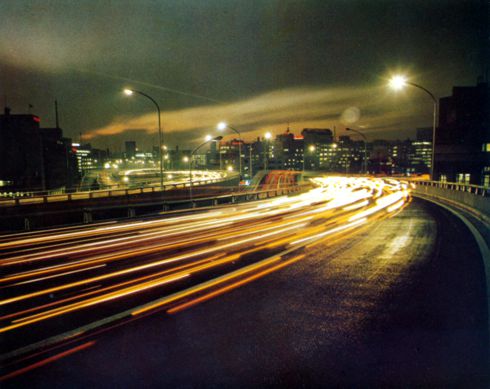 |
|
TRANSISTOR PLANTS
The electrical machinery industry of Japan has attained a remarkable advance in technique and production, and particularly its transistor industry is renowned for the top in the world..
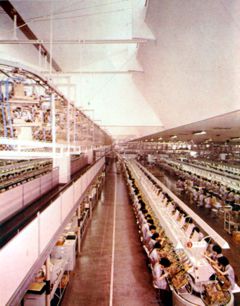 |
|
NAGOYA CASTLE
Castles are considered as a culmination of beauty originally from a fine complex of stones and white walls. The Nagoya Castle is one of the typical castles of old Japan.
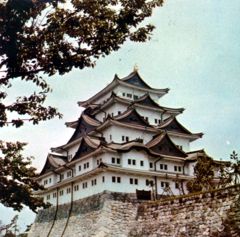 |
|
|
Source: Brochure, Japan Pavilion
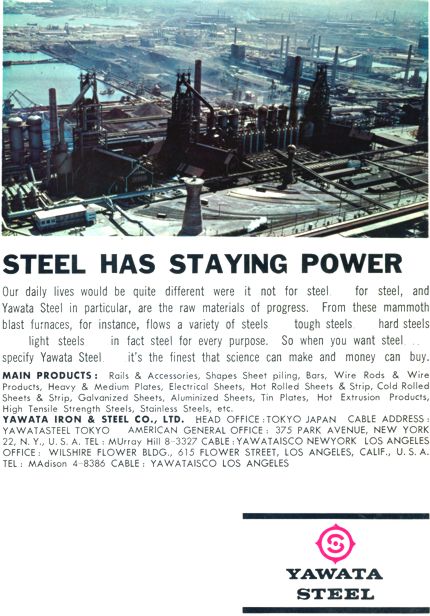 |
|



